Behind Oscar-Nominated Films, Alumni Expertise
The 89th Academy Awards kicked off on February 26 with a lively medley from pop superstar Justin Timberlake, culminating in a crowd-pleasing rendition of Bill Withers’s “Lovely Day,” backed by the Regiment Horns. Timberlake’s horn section is comprised of alumni Kevin Williams B.M. '03, Sean Erick B.M. '06, and Leon Silva Jr. B.M. '07—all of whom recently returned to Berklee for a concert in tribute to their mentor, Phil Wilson, Berklee brass professor. The Oscars night that followed Timberlake's opening acknowledged many on-camera achievements, and Berklee alumni have certainly enjoyed their fair share of screen time over the years.
Many Berklee alumni worked on films that were nominated for 2017 Academy Awards, including six-time Oscar winner La La Land.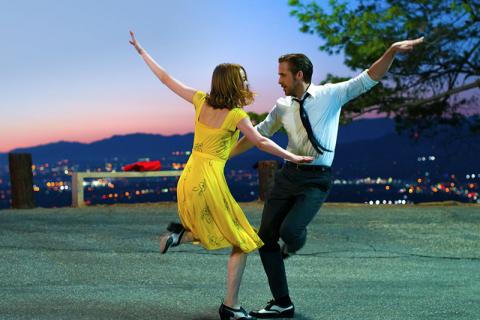
Nick Baxter B.M. ’07, who recorded and mixed music for the musical La La Land, says, “I think we all could see from the beginning that this project was special.”
Tanya Hill B.M. ‘95, who worked as a music editor on the Oscar-winning remake of Disney’s The Jungle Book, says that after majoring in film scoring and interning in Los Angeles through Berklee, she was “as prepared for a job in the film industry as anyone could be.”
Berklee alumni (from left to right) Kevin Williams B.M. ‘03, Sean Erick B.M. ‘06, and Leon Silva Jr. B.M. ‘07 (the Regiment Horns) backed Justin Timberlake on a medley to open the 2017 Oscars.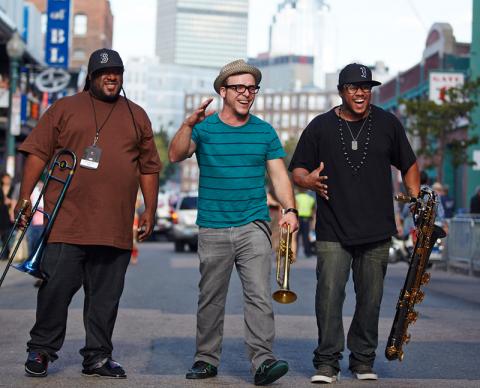
Several Berklee alumni worked on music and sound for Oscar-winning World War II drama Hacksaw Ridge.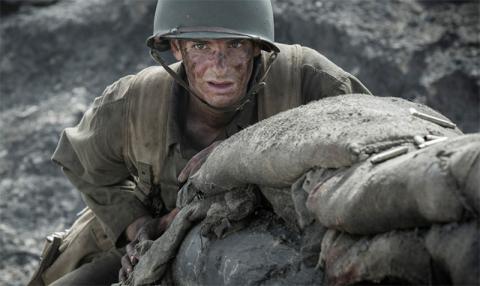
Chris Navarro ’94, whose massive list of ADR mixing credits this past year included Oscar winner Fences, starring Viola Davis and Denzel Washington, says that even though no Oscar exists for ADR work, “being on the short list of people that these top films and their makers can call on time and again gives me the satisfaction that I’m doing something right.”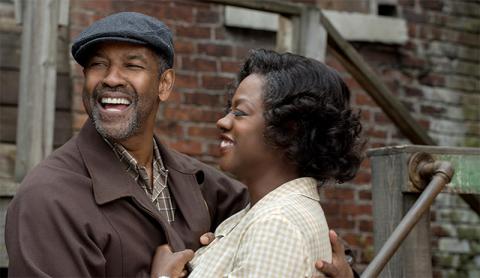
Roland Vajs B.M. ‘95, worked as a Foley editor and re-recording mixer on Oscar winner Manchester by the Sea, an emotionally charged drama starring Casey Affleck.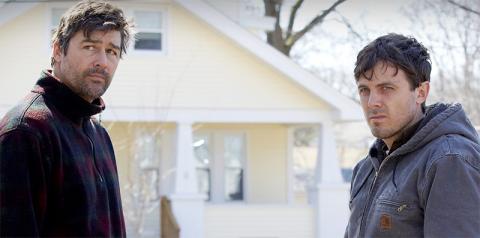
Best Picture nominee Lion, which tells the story of a young man (played by Dev Patel) searching for his biological family in India, featured the work of score music editor Francesco Le Metre B.M. '15.
This year, for instance, music director, songwriter, producer, and Black Eyed Peas percussionist Keith Harris B.M. '98 (read more on Harris in the latest edition of Berklee Today) portrayed a drummer in La La Land. But as musicians and audio professionals, Berklee alumni most profusely populate some of Hollywood’s best behind-the-scenes roles, and many Berklee alumni worked on a dozen of this year's Oscar-nominated films (see the list below), including most of the films nominated for Best Picture.
Baxter: The Sound of La La Land
Nick Baxter B.M. '07, a Grammy-winning mixer, recently completed music mixing and score recording work on La La Land, a musical saluting the value of society's dreamers from Damien Chazelle, who took home the 2017 Oscar for Best Director—one of six Oscars La La Land received on the night.
La La Land shares thematic similarities with an earlier Chazelle film revolving around jazz, love, and dreams, Guy and Madeline on a Park Bench, which co-starred Jason Palmer, Berklee professor of ensembles, and which was scored by Justin Hurwitz. (Hurwitz also scored—and won two Oscars for his work on—La La Land and, in an article for the Boston Globe, he pointed to the crucial influence of his exposure to Boston jazz musicians, some of them from Berklee.)
For Baxter, La La Land saw him at the controls in front of a 95-piece orchestra. It was, he notes, "a huge undertaking in post-production." It was also a new experience for him in that he was on set for every musical moment in the film, which enabled him to nip common problems in the bud right at the source rather than "applying bandages" in post-production.
Of La La Land’s sound, Baxter says, “This film called for a very organic, natural, and sometimes raw aesthetic.” He adds, “I think we all could see from the beginning that this project was special. Everyone was giving everything they had to the film from day one. When you see that kind of sacrifice and outpouring of creativity from the people around you, it’s contagious. I think that’s a big part of the reason this film turned out to be as special as it is.”
Baxter works—along with several other Berklee alumni—at Igloo Music, which takes on a diverse range of projects in formats from film, TV, and video games to live concerts, and he’s quick to credit Berklee’s music production and engineering program for equipping him to be ready to adapt to new challenges.
“Being able to read a score, understand and hear complex harmony, and communicate musically are invaluable skills in the film scoring world,” Baxter says. “It’s for this reason that we almost exclusively hire Berklee graduates at the studio. Most other tech schools don’t focus on the musical foundation as much.”
Hill: Editing Jungle Music
That foundation has also served Tanya Hill B.M. ’95 well. Hill is a veteran of film music editing who studied her craft, along with film scoring, at Berklee. Veteran though she may be, her work on the Oscar-winning 2016 remake of Disney’s The Jungle Book presented a new challenge: she had to start editing music before she had a picture to work with, the film music equivalent of “driving blind.”
As it turned out, that challenge presented Hill with the unique joy of watching the movie come alive as sketches of characters were eventually replaced by animations.
“The first time I saw Mowgli and Bagheera walking in front of this amazing waterfall with an entirely created world behind them, it took my breath away,” Hill says.
Hill notes that “music editing can definitely make or break a scene in a film,” though audiences likely put very little thought into the way music is edited while watching a film. That’s because Hollywood typically only hires those who do it well, and when it’s done well, it’s not noticeable.
“The only benchmark I use to evaluate my work, or the work of others, is if the music draws me into the scene,” Hill says. “If it works as well as it should, you will be truly moved by it.”
While concluding her studies at Berklee, Hill moved to Los Angeles and took an internship through Berklee, which she says “made all the difference in the world.”
“I met everyone I work with now during that time,” Hill explains, adding that her one-time classmates have become her friends and colleagues. “Through those students, I found my first job in the industry, and I still work with and socialize with so many of them.”
Navarro: Putting Ear Training to Work
When Hollywood needs automated dialogue replacement (ADR), one of the first names they turn to is Chris Navarro ’94. ADR may be necessary, for example, when a director wants an actor to try a line with a different emotional intonation after the shooting has already concluded.
Navarro’s credits are so extensive that it might be easier to list all of the films he did not work on last year than those that he did. His ADR work is on display in Best Picture nominees Fences and Hidden Figures, and Navarro takes pride in his work on such well-received films.
“While there are no, and never have been, Oscar categories for Best ADR Mixing, it’s pretty hard not to feel some bit of satisfaction for the success of those around you,” Navarro says. “Regardless of how much or how little I may be a part of any one project, just being on the short list of people that these top films and their makers can call on time and again gives me the satisfaction that I’m doing something right.”
That “something right,” Navarro suspects, involves both his easygoing personality and his carefully honed skills. Of the latter, Navarro compares recognizing parts of a triad to identifying what’s right or wrong about an actor’s performance from a sonic standpoint, saying, “I have always given a massive portion of the credit for my success directly to my ear training classes at Berklee.”
As he explains, “While one may find very little in common between ADR mixing and practicing intervals or humming bass lines while simultaneously conducting, to distinguish what you hear and recognizing aural characteristics couldn’t translate more clearly.”
And the Alumni Behind the Nominees Are...
Baxter, Hill, and Navarro represent only a few of the many Berklee alumni whose hard work lies behind the Academy Award–nominated films that were celebrated at this year's Oscars. More of those alumni are included below.
Asterisks denote Best Picture nominees. "O" denotes Oscar winners.
Allied
Alan Silvestri ’70 ‘95H, composer
Deepwater Horizon
Chris Navarro ‘94, ADR mixer
Hacksaw Ridge* (O)
James Allen Roberson B.M. ‘09, technical score engineer
Oscar Senen B.M. ‘13, orchestrator
Vladimir Tubic B.M. ‘13, orchestrator
Fences* (O)
Chris Navarro ‘94, ADR mixer
Hidden Figures*
Chris Navarro ‘94, ADR mixer
The Jungle Book (O)
Kevin Globerman B.M. ’95, digital score recordist
Tanya Noel Hill B.M. ’95, music editor
Kevin Kaska ’94, supervising orchestrator
Chris Navarro ‘94, ADR mixer
La La Land* (O)
Nick Baxter B.M. ‘07, music mixer/score recordist
Keith Harris B.M. ‘99, actor (“Cole”)
Justin Moshkevich B.M. ’07, Pro Tools engineer
Lion*
Francesco Le Metre B.M. '15, score music editor
Manchester by the Sea* (O)
Roland Vajs B.M. ‘95, Foley editor/re-recording mixer
Moana
Jason Poss ‘97, music transcription
Nocturnal Animals
Tara Blume B.M. ‘07, Foley artist
Chris Navarro ‘94, ADR mixer
Trolls
Jason W. Jennings B.M. ‘92, sound designer
John Marquis ‘93, sound designer
Zootopia (O)
Frank Macchia B.M. '80, music preparation
Jason Poss ‘97, music transcription
